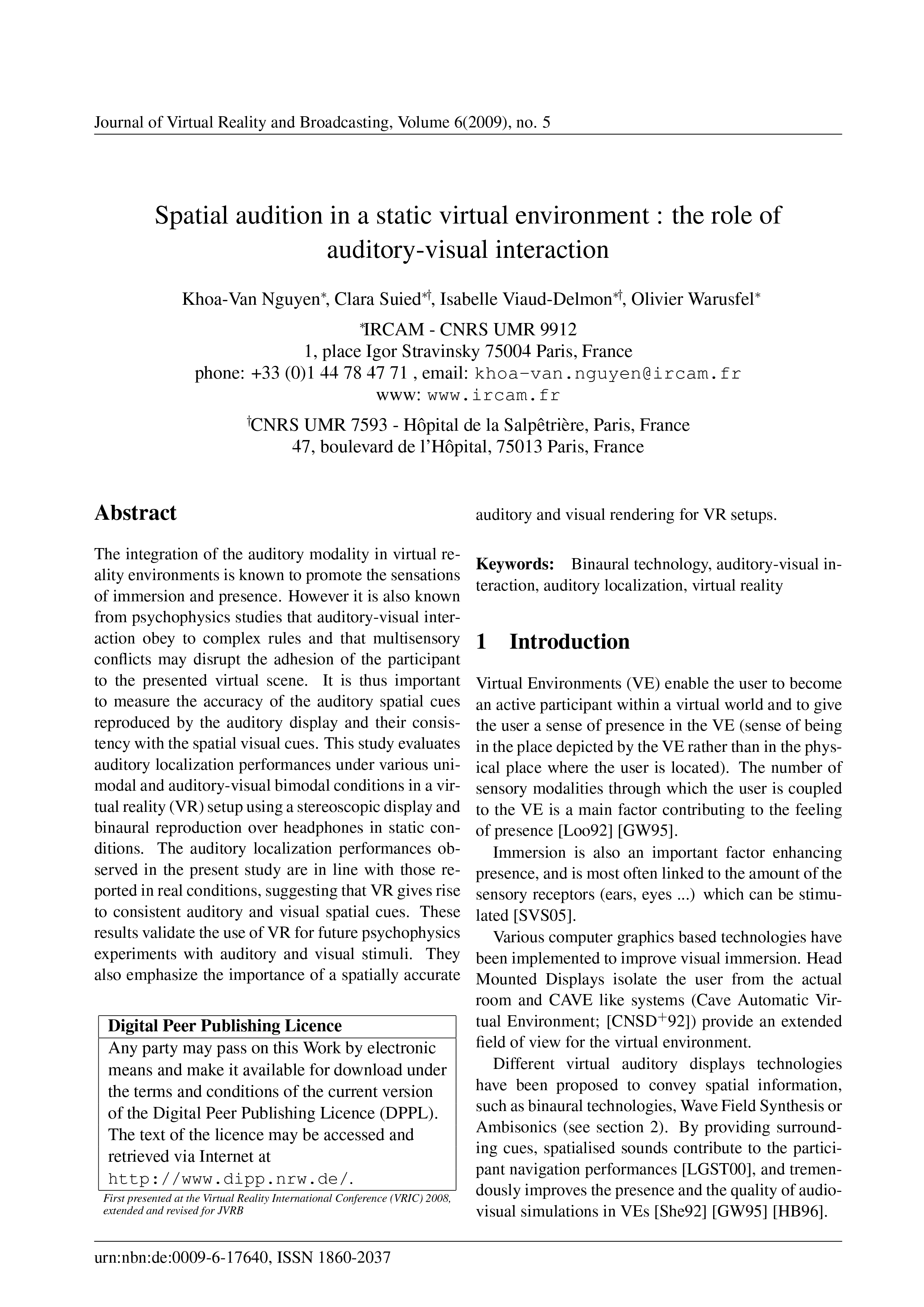Spatial audition in a static virtual environment : the role of auditory-visual interaction
DOI:
https://doi.org/10.20385/1860-2037/6.2009.5Keywords:
Auditory Localization, Auditory-visual Interaction, Binaural Technology, Virtual RealityAbstract
The integration of the auditory modality in virtual reality environments is known to promote the sensations of immersion and presence. However it is also known from psychophysics studies that auditory-visual interaction obey to complex rules and that multisensory conflicts may disrupt the adhesion of the participant to the presented virtual scene. It is thus important to measure the accuracy of the auditory spatial cues reproduced by the auditory display and their consistency with the spatial visual cues. This study evaluates auditory localization performances under various unimodal and auditory-visual bimodal conditions in a virtual reality (VR) setup using a stereoscopic display and binaural reproduction over headphones in static conditions. The auditory localization performances observed in the present study are in line with those reported in real conditions, suggesting that VR gives rise to consistent auditory and visual spatial cues. These results validate the use of VR for future psychophysics experiments with auditory and visual stimuli. They also emphasize the importance of a spatially accurate auditory and visual rendering for VR setups.
Published
2009-02-20
Issue
Section
VRIC 2008





